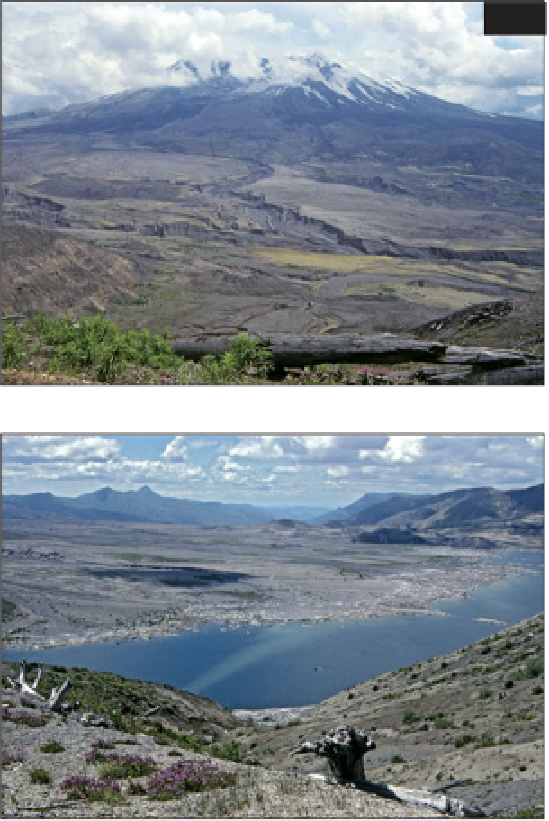Geoscience Reference
In-Depth Information
filled with sediment, became blocked to
shipping (Pringle, 1993). Ash and pumice
falls spread across thousands of square
miles downwind of the eruption.
Just as the Mt St Helens eruption did
in 1980, the flows of lava, ash and debris
from the Guffey center greatly altered the
landscape around Florissant. One lahar
must have inundated a forest of giant
redwood trees, and later groundwater
activity leached silica from the rock and
infused it into the tree wood, a process
known as permineralization, to produce
the petrified trunks. Being softer, the
surrounding pyroclastic rock erodes away
more easily, leaving the trunks standing.
Another lahar dammed the river system
in the Florissant Valley to produce a lake.
The lake would have been around 1.6 km
(1 mile) wide and 20 km (12 miles) long,
resembling a man-made reservoir with
fingers running up tributary valleys
(Meyer, 2003). The Guffey volcanic
center was active on and off over many
thousands of years, occasionally pouring
ash, pumice, and lahars into the lake.
221
221 Mt St Helens in 1995 10
years after its 1980 eruption
from Johnston Ridge looking
east, showing the vast blanket
of ash and debris which blew
out of the volcano and choked
the headwaters of the Toutle
River foreground.
222
222 View down the Toutle
River valley with Spirit Lake in
the foreground. This view from
Windy Ridge looks west
towards Johnston Ridge 218;
note the blasted trees, their
stumps are all that remains of
the forest and their trunks
float on the lake surface.






Search WWH ::

Custom Search